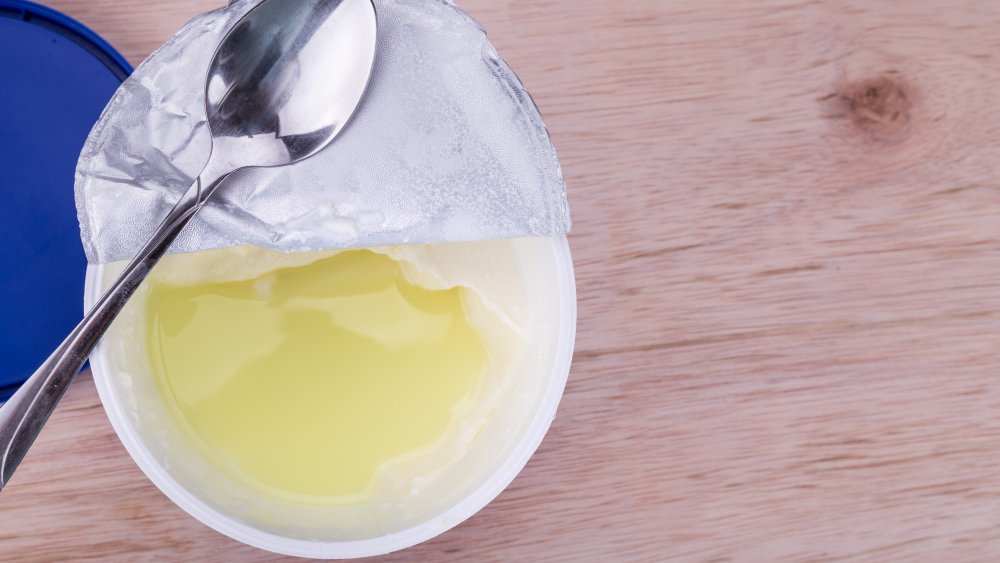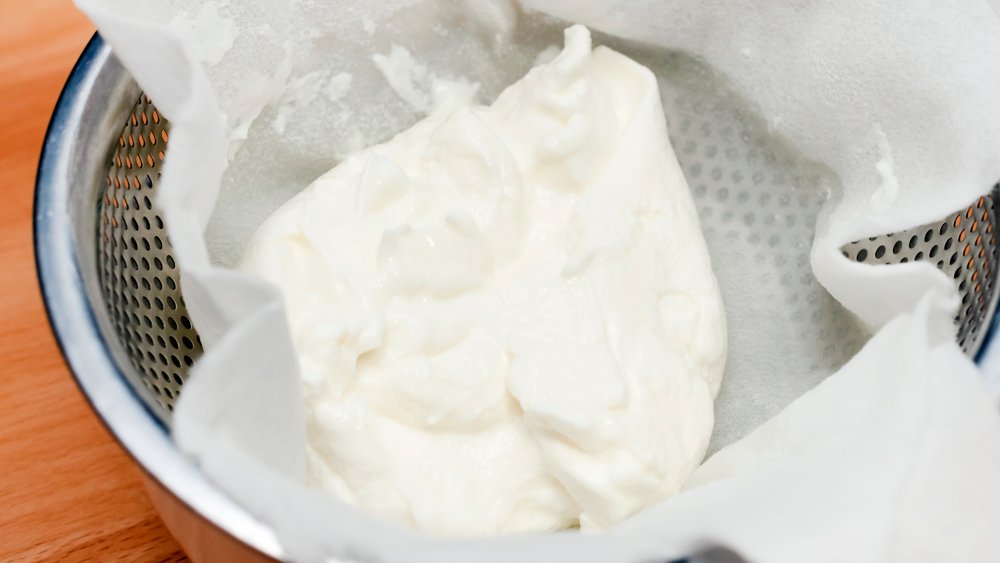What Is Yogurt Whey And How Is It Used In Cooking?
The word "whey" definitely doesn't sound too appetizing, and it becomes even less so when you put it in context with yogurt. According to Bon Appetit, straining is what helps thicken yogurt to a yummy consistency, and acid whey is what gets left behind (sweet whey is what's leftover from making some types of cheese, like Swiss and cheddar). It's sort of a foggy, cloudy liquid, and it comes from making thicker types of yogurt, especially Greek yogurt.
As Greek yogurt has become more and more popular, food manufacturers are being left with more acid whey than ever before. As Modern Farmer reports, producing one ounce of Greek yogurt takes about three or four ounces of milk, and everything leftover from the process becomes acid whey. That quickly adds up to a lot of whey, and it has to be carefully disposed of, because it can be toxic to natural environments as it breaks down. It's created a problem for food manufacturers looking to get rid of lots of acid whey, though they've found some creative solutions; for example, Chobani pays farmers to take some of their acid whey, where it's either mixed into animal feed or combined with manure for fertilizer.
How to use yogurt whey in cooking
However, home cooks don't need to worry about disposing of acid whey on a large scale. And it's not something to be scared of, either — according to Cooking Light, if you've ever opened a container of Greek yogurt and seen liquid (almost like water) at the top, that's whey, and it's easy to just stir it back into your yogurt. If you make your own yogurt at home and end up with whey, know that it still has calcium and even the same probiotics as the yogurt you're making, so if you can find a way to use it, that's better than letting it go to waste. Previously, some chefs have used acid whey as part of a brining liquid for chicken and turkey, in place of lemon juice in some dishes, and even in cocktails.
Bon Appetit reports that some people are also adding whey to smoothies and juices. One yogurt company, The White Moustache, is even experimenting with producing their own whey drinks. But if you make yogurt at home and end up with leftover whey, your best bet is to use it like you would any other acid. That means it's great for brining meat, or even adding a dribble to a soup recipe to give it an extra kick of acidic flavor. The Spruce Eats even notes that acid whey could play a role in your beauty routine by using it to rinse your hair (which may help make it shinier and smoother), or swabbing it on with a cotton ball to help tone skin. Just remember — don't toss that watery liquid after making your next batch of yogurt!

